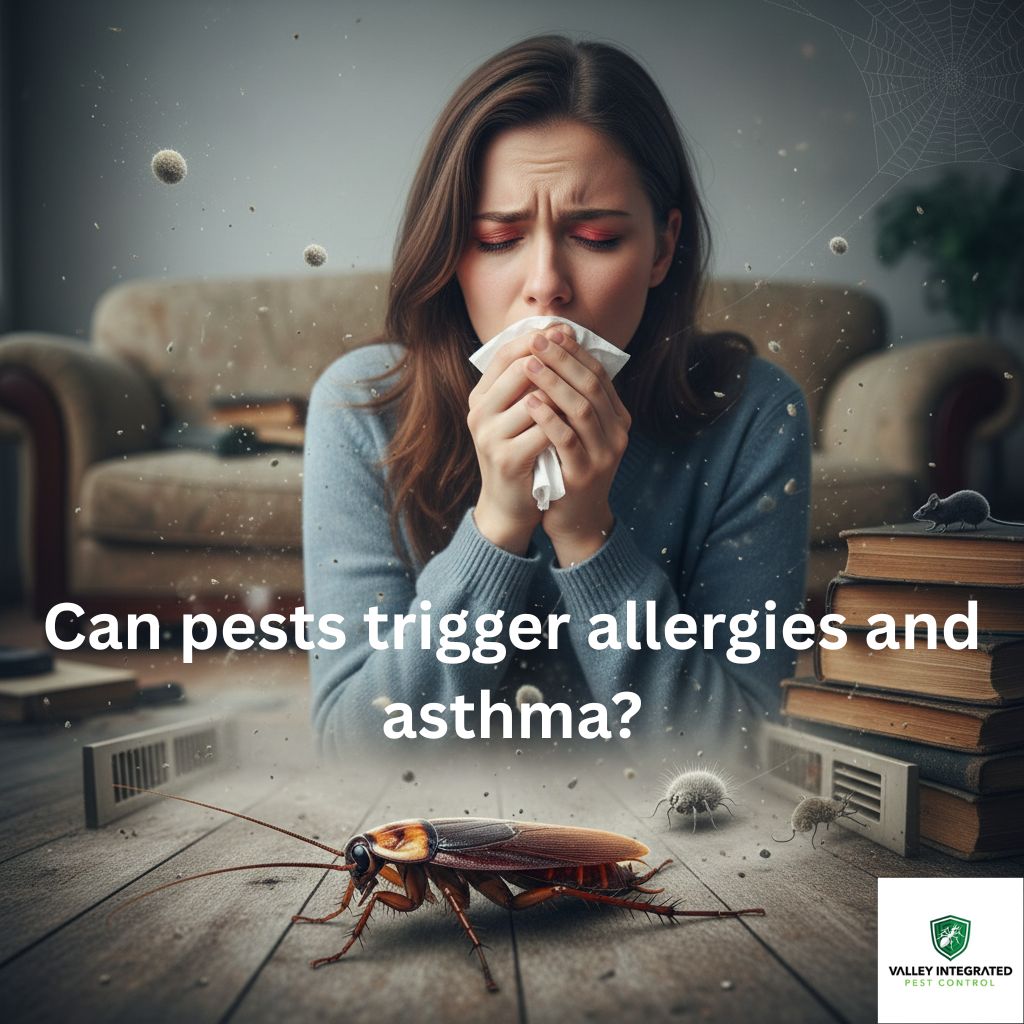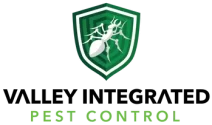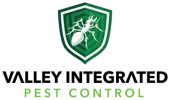Yes, common household pests like cockroaches, rodents, and dust mites can absolutely trigger allergies and, more alarmingly, contribute to the development of lifelong asthma. The real danger isn’t the pests you see, but the invisible, microscopic allergens they leave behind in their droppings, saliva, and shed body parts, which can reprogram the immune system, especially in children, leading to chronic respiratory conditions.
The Real Enemy is Invisible: Unmasking Pest Allergens
When you spot a cockroach scurrying across the floor or hear the faint scratching of mice in the walls, your first instinct is likely one of disgust. But the true threat to your family’s health is something you can’t even see. The primary problem isn’t the live pest itself, but the potent, microscopic proteins they continuously release into your home environment. These proteins are the true cause of pest-induced health issues.

So, what exactly are these allergens and where do they come from?
- Cockroaches: People often wonder, what part of a cockroach causes allergies? The answer is nearly every part. Allergenic proteins are found in their saliva, feces (often called “frass”), shed skins (exoskeletons), and even their dead bodies. This material is lightweight, becomes airborne easily, and settles into the household dust. The link between cockroaches and their link to asthma severity is well-documented, with cockroach frass and asthma being a particularly dangerous combination.
- Rodents (Mice and Rats): If you’re asking, “can mice cause respiratory problems?” the answer is a definitive yes. The primary culprits are proteins found in their dander (skin flakes), saliva, and urine. Mouse urine allergen health effects are significant; as the urine dries, the allergenic proteins flake off and circulate in the air, creating serious breathing problems from mice in walls and other hidden spaces. Many people don’t realize that rodent dander and allergies are a major source of indoor air pollution. You can certainly be allergic to rat droppings as well. Read more in our article about The Kinds of Health Risks Rodents Bring
- Dust Mites: These microscopic arachnids are one of the most common indoor allergen sources worldwide. They thrive in warm, humid environments like bedding, upholstered furniture, and carpets. The allergens come from their tiny fecal particles and decaying bodies. In fact, dust mite allergy and asthma are so closely linked that their antigens are a primary factor in a huge number of cases. House dust mite antigens are strongly associated with asthma development and severity; they are estimated to contribute to 60–90% of cases according to encyclopedic health data.
These particles are incredibly small and light, mixing with other particulates to form common household dust. This dust is a complex mixture; it’s not just dirt. Household dust is composed of dead skin cells, pollen, animal dander, dust mites, dust mite corpses, and dust mite droppings, which can trigger wheezing, coughing, and allergy and asthma attacks as detailed by consumer product researchers. This allergen-laden dust settles on surfaces, gets kicked up into the air with simple movement, and is inhaled, beginning an insidious process inside the body.
Related: Can Cockroaches Trigger Allergies?
From Exposure to Overreaction: How Your Body Learns to Attack
You might wonder, “why am I suddenly allergic to cockroaches?” or other pests. The answer lies in a process called sensitization. Your body doesn’t react the very first time it encounters a pest allergen. Instead, with repeated exposure, your immune system can mistakenly learn to identify these harmless proteins as dangerous invaders, like a virus or bacteria.
Here’s a simplified breakdown of what happens:
- Initial Exposure: You breathe in airborne proteins from cockroach frass or rodent dander. Your immune system’s surveillance cells (antigen-presenting cells) capture these proteins.
- Misidentification: The immune system analyzes the protein and incorrectly flags it as a major threat.
- Antibody Production: In response, your body produces a specific type of antibody called Immunoglobulin E (IgE). These IgE antibodies are tailor-made to recognize and bind only to that specific pest allergen.
- Priming the System: The newly created IgE antibodies attach themselves to mast cells, which are immune cells located in your skin, lungs, and lining of your nose and digestive tract. Your body is now “sensitized” or primed for an attack.
Once you are sensitized, any subsequent exposure to that same pest allergen will trigger a rapid and aggressive allergic reaction. The pest proteins bind to the IgE antibodies on your mast cells, causing them to release a flood of chemicals, including histamine. This chemical flood is what causes the classic allergy symptoms: sneezing, itchy eyes, runny nose (a condition known as pest-induced allergic rhinitis), and skin reactions. For those with asthma, this reaction goes deeper, causing the airways in the lungs to swell and constrict, leading to a full-blown asthma attack.
More Than a Trigger, A Cause: The Pests-to-Asthma Pipeline
For decades, we’ve understood how pests trigger asthma attacks in people who already have the condition. But modern science has revealed a far more disturbing truth: for some, especially children, early and persistent exposure to pest allergens can be the primary cause of asthma itself. This is a critical distinction—pests aren’t just aggravating a pre-existing condition; they are helping to create it.
This is particularly true in the case of childhood asthma. A child’s immune system is still developing, making it more susceptible to being programmed incorrectly by environmental factors. When a young child in a pest-infested home constantly breathes in these potent allergens, their immune system can develop a hyper-reactive response that becomes permanent. This is a major public health concern, as asthma is an extremely common chronic disease affecting over 26 million people and 7 million children in the US according to public health statistics. The connection is so strong that researchers have found that indoor infestations of cockroaches and rodents are strong risk factors for the development of allergic asthma, especially in low-income, urban populations according to university agricultural and natural resources studies. The link between childhood asthma and cockroach exposure is one of the most well-established environmental risk factors for the disease.
This long-term programming of the immune system explains the long-term effects of pest allergen exposure. It’s not just a temporary reaction; it’s a lifelong condition that requires constant management. The pest droppings and immune system response are inextricably linked, creating a pathway from a simple infestation to a chronic, life-altering disease.
The Lingering Threat: Why DIY Isn’t Enough
A common misconception is that once you’ve killed the visible pests, the problem is solved. Unfortunately, this is far from the truth. The allergenic proteins left behind are remarkably resilient and can persist in your home for months, or even years, after the infestation has been eliminated. The question “do dead cockroaches still cause allergies?” has a clear answer: yes, absolutely.
These allergens are sticky and heavy, embedding themselves deep into porous surfaces:
- Carpets and rugs
- Upholstered furniture and curtains
- Mattresses and bedding
- Children’s stuffed toys
- Ductwork and pest allergens in HVAC systems
Simply spraying pesticides or setting traps does nothing to address this reservoir of allergens. Every time you walk across the carpet, sit on the couch, or turn on your air conditioning, you are re-suspending these particles into the air you breathe. This is why many people find their allergy symptoms don’t improve—or their child’s asthma continues to flare up—even after they believe the pest problem is under control. Effective cockroach allergen removal tips and strategies for how to clean your house of pest allergens must go beyond standard cleaning. It requires a deep, methodical approach to physically remove the source material, which is a key component of a professional integrated pest management program.
Nuisance vs. Health Threat: A Clear Comparison
Understanding the full scope of the problem requires shifting your perspective. Viewing pests as a simple annoyance is an outdated and dangerous viewpoint. Here’s a direct comparison of the two perspectives.
| Factor | Pests as a Simple Nuisance (The Old View) | Pests as a Health Threat (The Modern Reality) |
|---|---|---|
| Primary Concern | The “ick” factor, visible presence of pests, potential property damage, and contamination of food. | The invisible allergens they produce, chronic allergy development, and the permanent onset of asthma. |
| Affected Population | Anyone living in the house who is bothered by the sight of pests. | Primarily children (risk of developing asthma), and individuals with existing allergies or asthma (risk of severe attacks). |
| Solution | Over-the-counter sprays, traps, and baits focused on killing visible pests. | A comprehensive strategy including source elimination, professional pest control, and deep cleaning services for allergen removal. |
| Long-Term Impact | Pests may be temporarily gone, but the cycle of re-infestation is common. The root cause is not addressed. | Improved indoor air quality, reduced risk of chronic disease, and a healthier living environment for the entire family. |
| Key Decision Factor | Cost and immediate pest removal. | Protection of family health, particularly children’s respiratory health, and the prevention of chronic conditions. |
Identifying the Culprit: Are Pests Making You Sick?
It can be difficult to distinguish between seasonal allergies and a reaction to an indoor pest problem. If you’re wondering how to know if pests are making you sick, look for these tell-tale signs:
- Symptoms are worse at home: Do you find your sneezing, coughing, or breathing difficulties improve when you leave the house for an extended period? This is a strong indicator that the trigger is inside your home.
- Year-round symptoms: While pollen causes seasonal allergies, pest allergens are present all year long. If your “hay fever” never seems to end, pests could be the culprit.
- Nighttime flare-ups: Symptoms that worsen at night could point to dust mites in your bedding or pests that are more active after dark, like cockroaches and mice.
- Localized reactions: Are your symptoms more severe in certain rooms, like the basement, kitchen, or a specific bedroom? This could point to the location of the infestation.
- Physical evidence: Seeing pest droppings, musty odors (a common sign of cockroach or rodent infestations), or actual pests is a clear sign you need to investigate the health connection.
Specific pest allergy symptoms can also provide clues. Cockroach allergy symptoms often include sneezing, a stuffy or runny nose, itchy skin or eyes, and can sometimes manifest as a skin reaction. A common question is, “what does a cockroach allergy rash look like?” It typically appears as red, itchy bumps or patches, similar to other allergic rashes, and can be related to the connection between pests and eczema flare-ups. For rodents, symptoms of rodent infestation allergies are very similar to other airborne allergens, focusing on respiratory distress, coughing, and wheezing.
Frequently Asked Questions About Pests, Allergies, and Asthma
Navigating the connection between pest control and respiratory health can be confusing. Here are answers to some of the most common questions we encounter.
How to tell if it’s allergies or asthma?
Allergies and asthma are related but distinct conditions. An allergy is an overreaction of the immune system to a substance like pest dander or pollen. Symptoms typically affect the nose, eyes, throat, and skin (allergic rhinitis). Asthma is a chronic disease of the lungs where the airways become inflamed and narrowed. While allergies can be a trigger for asthma, asthma involves the lungs directly, causing coughing, wheezing, shortness of breath, and chest tightness. Think of it this way: an allergy is the spark, and for some people, that spark can ignite the fire of an asthma attack.
What can cause asthma flare-ups?
Asthma flare-ups, or attacks, can be initiated by a wide range of triggers. Pest allergens from cockroaches, rodents, and dust mites are a major category of indoor triggers. Other common causes include pet dander, mold, tobacco smoke, pollen, exercise, cold air, and respiratory infections. Identifying pest triggers for asthma is a crucial step for anyone trying to manage the condition in their home environment.
Can pest control trigger asthma?
This is a critical and valid concern. The answer is: it depends entirely on the method used. Traditional, heavy-handed applications of certain pest control chemicals and respiratory irritation can go hand-in-hand. Harsh sprays and foggers can release volatile organic compounds (VOCs) into the air, which can be potent irritants for sensitive airways. This is why asking “are pest control sprays safe for asthmatics?” is so important.
However, modern, professional approaches prioritize safety. Integrated Pest Management (IPM) is a strategy that focuses on long-term prevention and uses low-toxicity, targeted treatments like baits and gels placed in inaccessible areas. There are many hypoallergenic pest control methods and options for pest control without triggering asthma. A reputable professional will always discuss health concerns and tailor a treatment plan that minimizes airborne irritants, making the process safe for allergy and asthma sufferers.
How do you treat environmental asthma?
Treating asthma caused or triggered by environmental factors is all about source control. The primary strategy is to eliminate or drastically reduce your exposure to the triggers. For pest-related asthma, this involves a multi-pronged approach:
- Eliminate the Source: The first step is professional pest eradication. Preventing pest infestations to avoid allergies is the ultimate goal. A professional service can ensure the pests are eliminated effectively.
- Remove the Allergens: As discussed, killing the pests isn’t enough. A thorough deep clean is required. This includes steam cleaning carpets and upholstery, washing bedding in hot water, and wiping down all hard surfaces. How to remove pest allergens from home often requires specialized equipment and techniques.
- Purify the Air: High-efficiency particulate air (HEPA) filters are essential. HEPA filters for rodent dander and other pest allergens can dramatically improve indoor air quality. Standalone air purifiers for cockroach allergens can be placed in bedrooms and main living areas. Ensure your HVAC system is fitted with a high-quality filter and the ducts are clean.
- Allergy-Proof Your Home: Seal cracks and crevices where pests can enter. Use dust-mite-proof covers on mattresses and pillows. Reduce clutter where pests can hide and dust can accumulate. This is the core of allergy-proofing your home from pests.
Making the Right Choice for Your Needs
Deciding how to address a pest problem is no longer just about getting rid of a nuisance; it’s a crucial health decision for your family. The right approach depends on your specific situation and priorities.
For the Health-Conscious Parent
Your primary focus is prevention. You want to ensure your home is a safe environment where your children can grow and develop without the risk of acquiring a lifelong condition like asthma. For you, the most effective strategy is proactive and comprehensive. This means not waiting for a major infestation to act. An Integrated Pest Management (IPM) plan that includes regular inspections, sealing potential entry points, and using targeted, preventative treatments provides the ultimate peace of mind. Your goal is to stop the problem long before it can impact your child’s developing immune system.
For the Allergy/Asthma Sufferer
You are living with the daily reality of these conditions, and your goal is mitigation and relief. You need to know, “can extermination improve allergy symptoms?” Yes, but it must be the right kind of service. You require a pest control partner who understands the stakes. Look for a company that specializes in pest control for allergy sufferers and offers a consultation to discuss your specific health needs. The ideal plan for you involves not only thorough pest elimination using low-irritant methods but also clear guidance on allergen cleanup and air quality improvement. Your immediate health and well-being depend on removing the environmental triggers causing your suffering.
For the Proactive Homeowner
You understand that your home is your most significant investment, and you want to protect it and the people within it. You see pest control not as a one-time fix but as essential home maintenance, just like caring for your roof or plumbing. Your best choice is a long-term prevention plan that maintains a pest-free environment year-round. This approach prevents both costly property damage from pests and the emergence of serious health risks for your family or future occupants. It’s a smart, forward-thinking strategy that safeguards your health and your investment.
Ultimately, addressing the link between pests and respiratory health requires a shift from reactive killing to a proactive, health-focused strategy. For a comprehensive assessment that prioritizes your family’s safety and well-being, the expert team at Valley Integrated Pest Control in Fresno, CA, is here to help. We specialize in creating customized, long-term solutions that not only eliminate pests but also help restore a healthy home environment. Contact us today for a consultation and a free, no-obligation quote.






